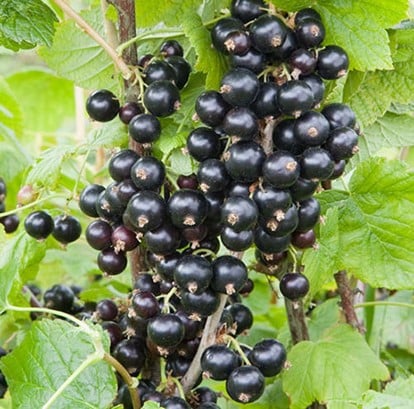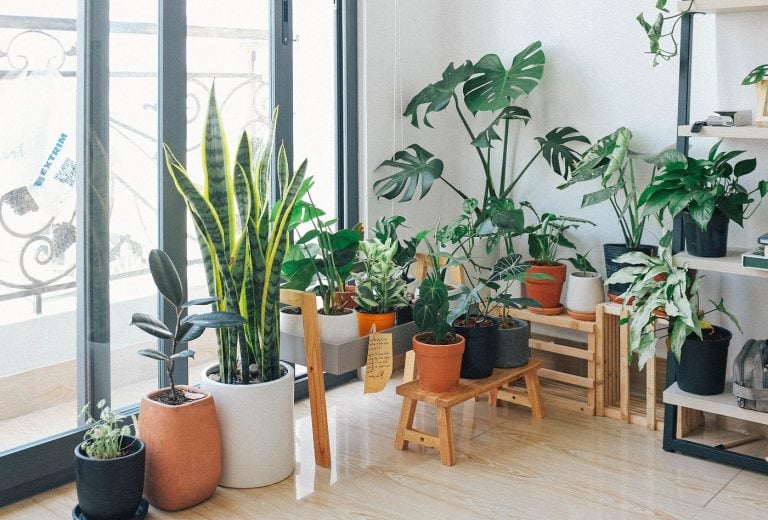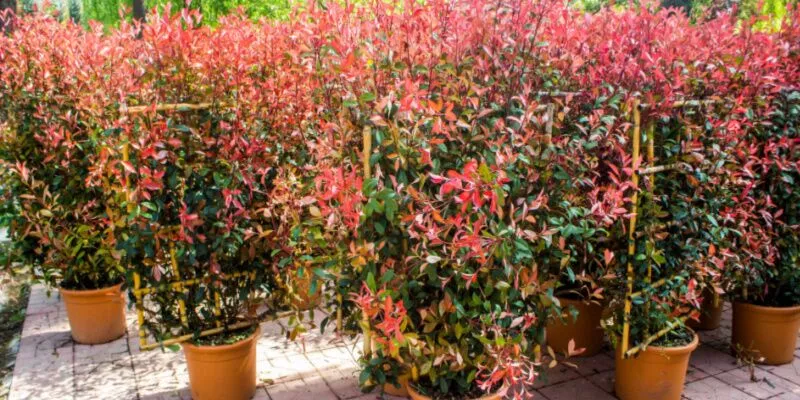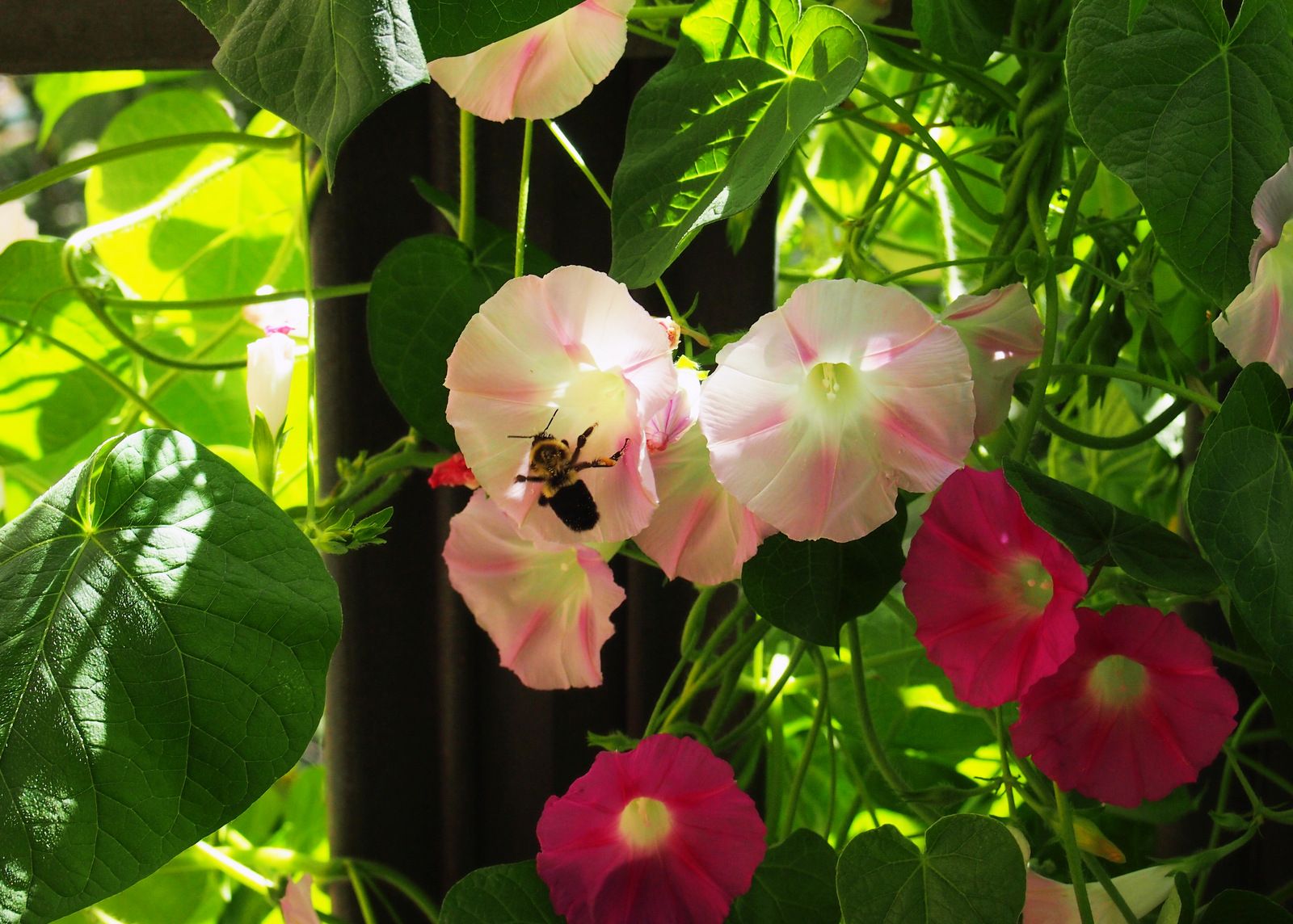Low Maintenance Climbing Plants

Table of Contents
Introducing low-maintenance climbing plants into your garden or outdoor space can be a delightful way to enhance its aesthetic appeal while minimizing the time and effort required for upkeep. These versatile and resilient climbers not only bring a touch of nature to your surroundings but also offer various practical benefits, such as privacy, shade, and the attraction of pollinators.
A terrific option to add beauty and greenery to outdoor spaces without the effort of ongoing care or upkeep is with evergreen maintenance fast-growing climbing plants. These climbing plants provide a flash of color throughout the year and don’t need a lot of water, pruning, or fertilization to be healthy and vibrant.
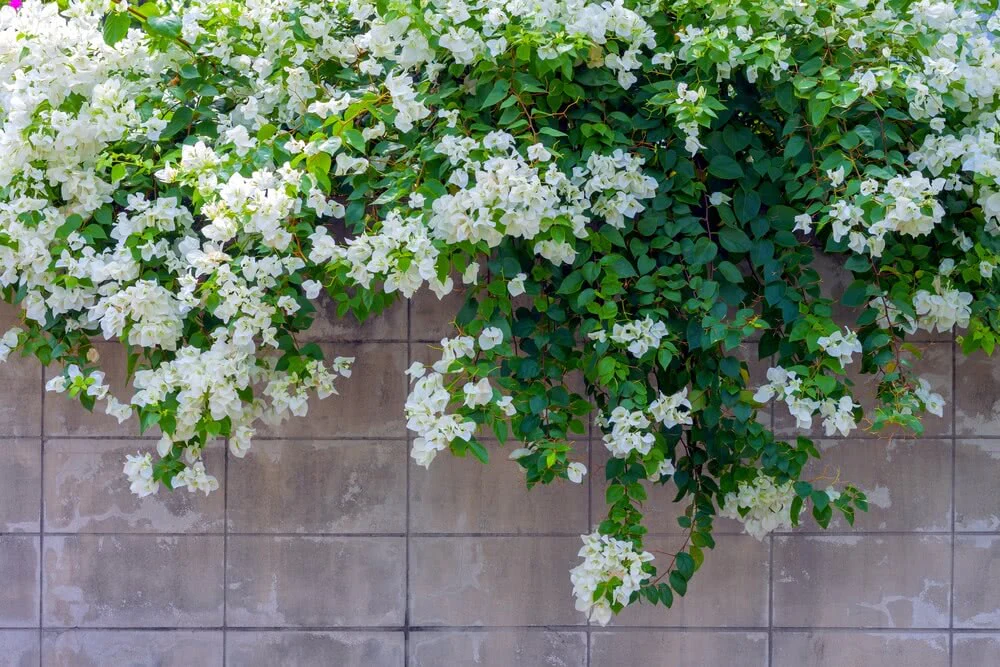
Explore a selection of low-maintenance climbing plants that thrive in a variety of conditions, making them an ideal choice for both amateur and experienced gardeners looking to add a vertical feature to their home without a lot of fuss.
Low-Maintenance Climbing Plants
Check out these low-maintenance, vibrant blooms and fragrant vines that will totally transform the look of your home.
1. Clematis
These are popular climbing plants known for their stunning flowers. They thrive in well-drained soil and can tolerate a variety of light conditions. Once established, they require minimal care, and you can prune them in late winter or early spring. The blooms are available in various hues, from light pink to deep purple.
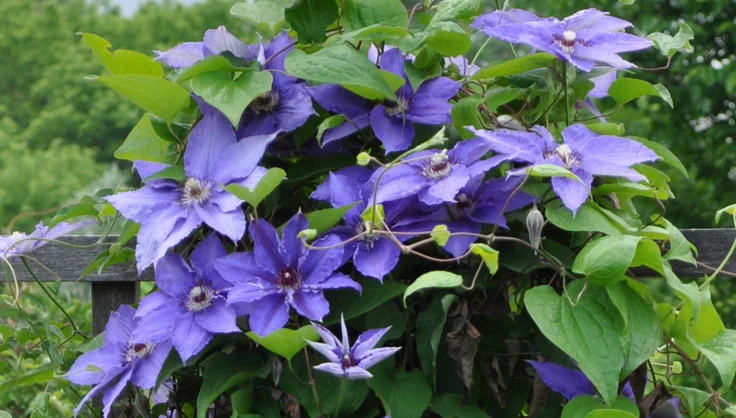
2. Honeysuckle
Honeysuckle vines are easy to grow and produce fragrant, trumpet-shaped flowers. They attract a lot of hummingbirds and bees. They are generally hardy and adaptable, making them a low-maintenance choice for climbing plants.
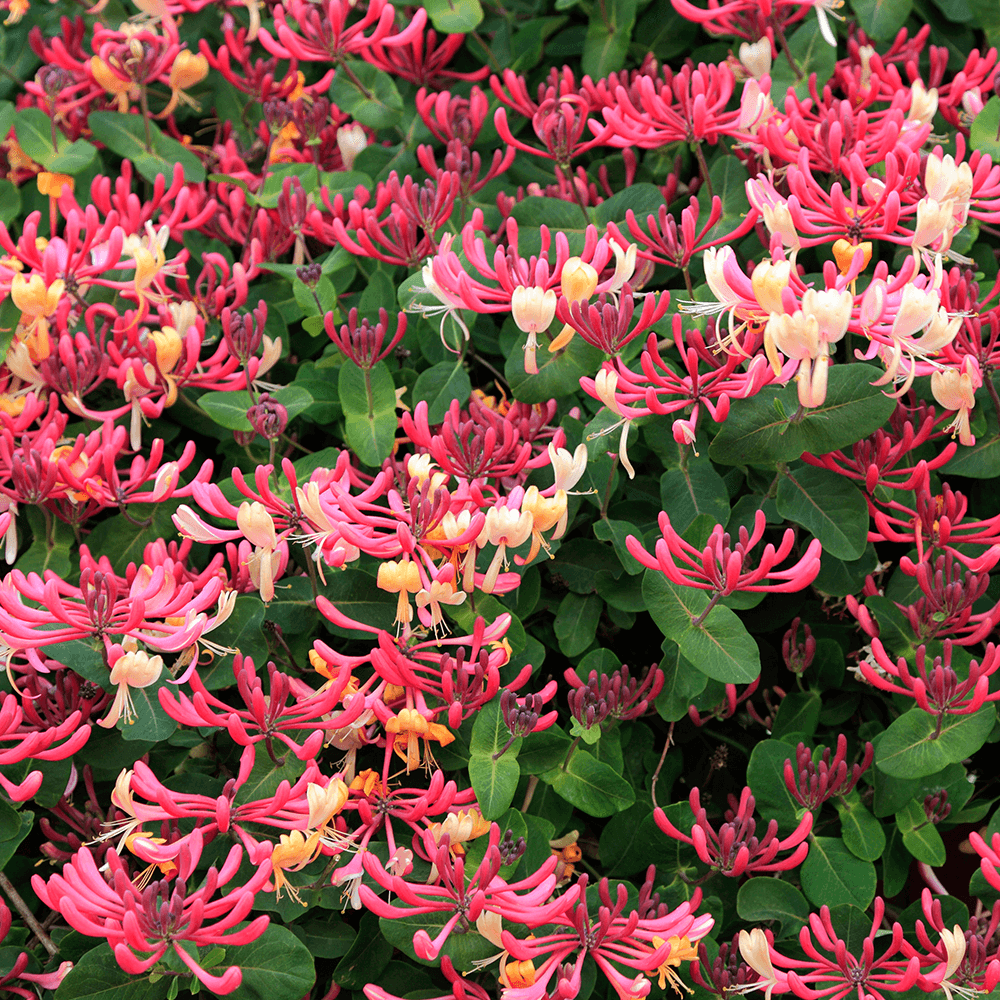
3. Wisteria
While wisteria can be invasive in some regions, it’s a low-maintenance climber once established. It produces beautiful cascading clusters of fragrant, violet-blue blossoms that bloom in the middle of spring. Regular pruning will help control its growth and promote flowering.
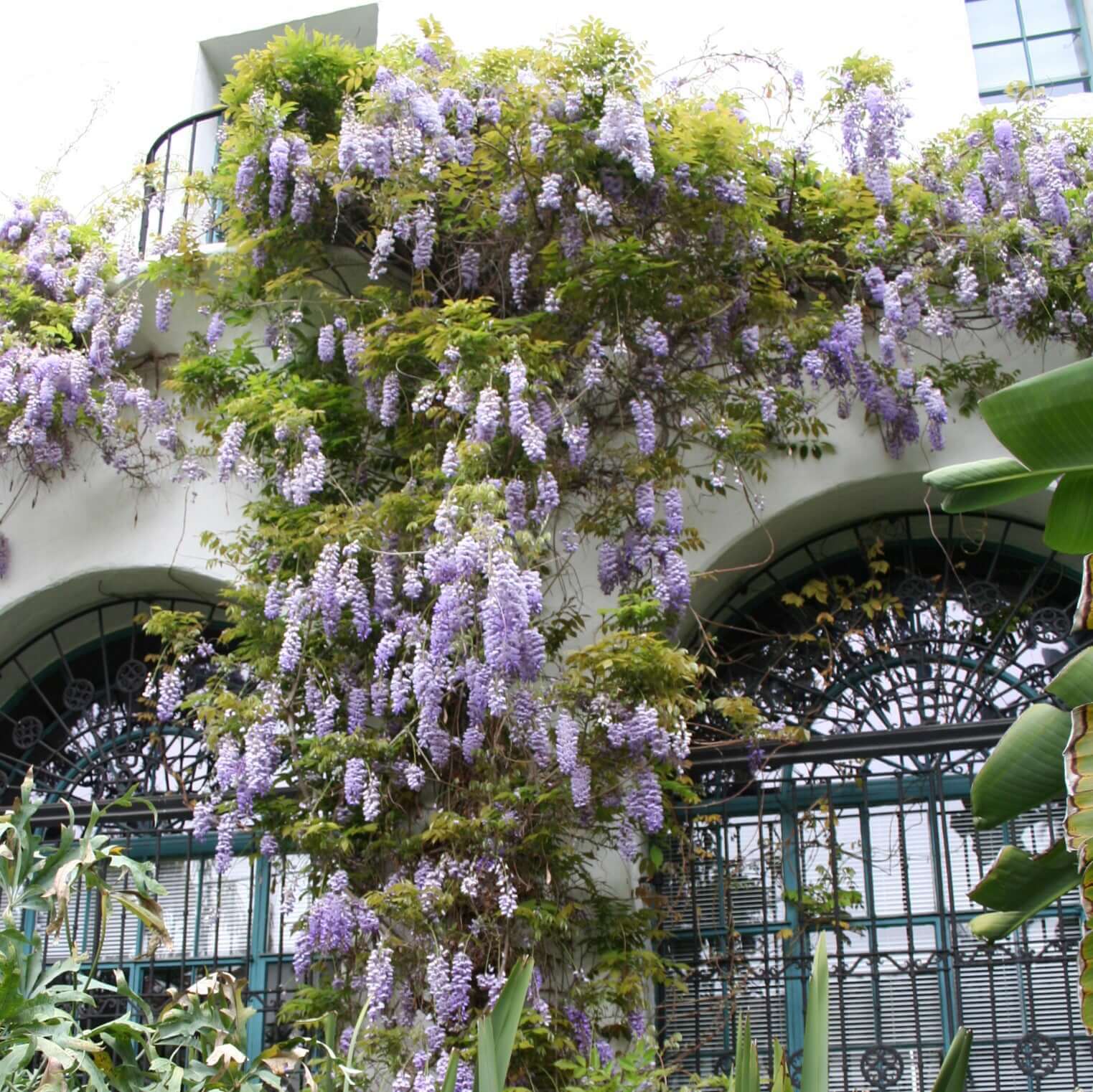
4. Jasmine
Jasmines, like Confederate Jasmine or Star Jasmine, are known for their fragrant, white flowers. They require little care and can thrive in various soil types and light conditions.
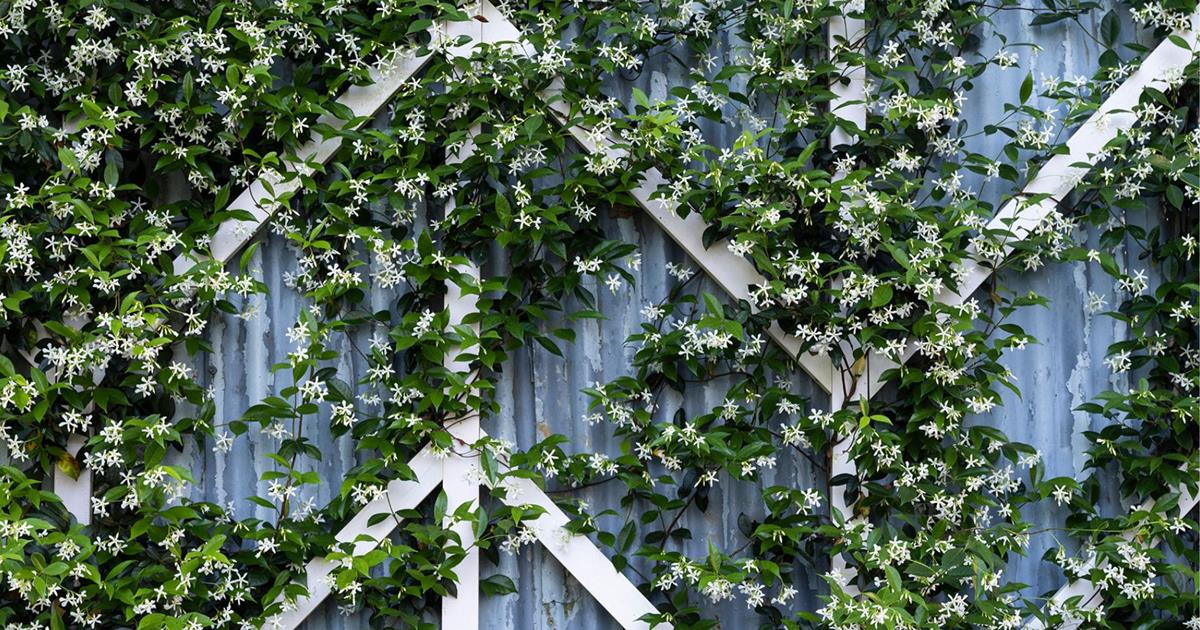
5. Virginia Creeper
This deciduous vine is known for its striking red color in the fall. It’s very low-maintenance and can handle different soil types and light conditions. The best time to plant them is during spring and fall.
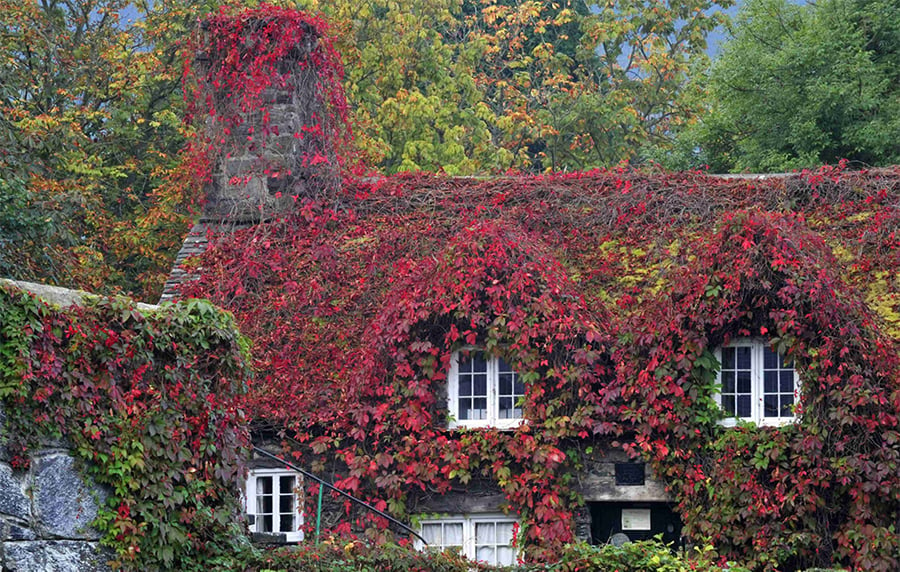
6. Bougainvillea
Bougainvillea is a tropical climbing plant that thrives in full sun and well-drained soil. It has papery bracts, or flowers, in electric pink or purple. Once established, it’s quite drought-tolerant and needs minimal maintenance beyond occasional pruning.
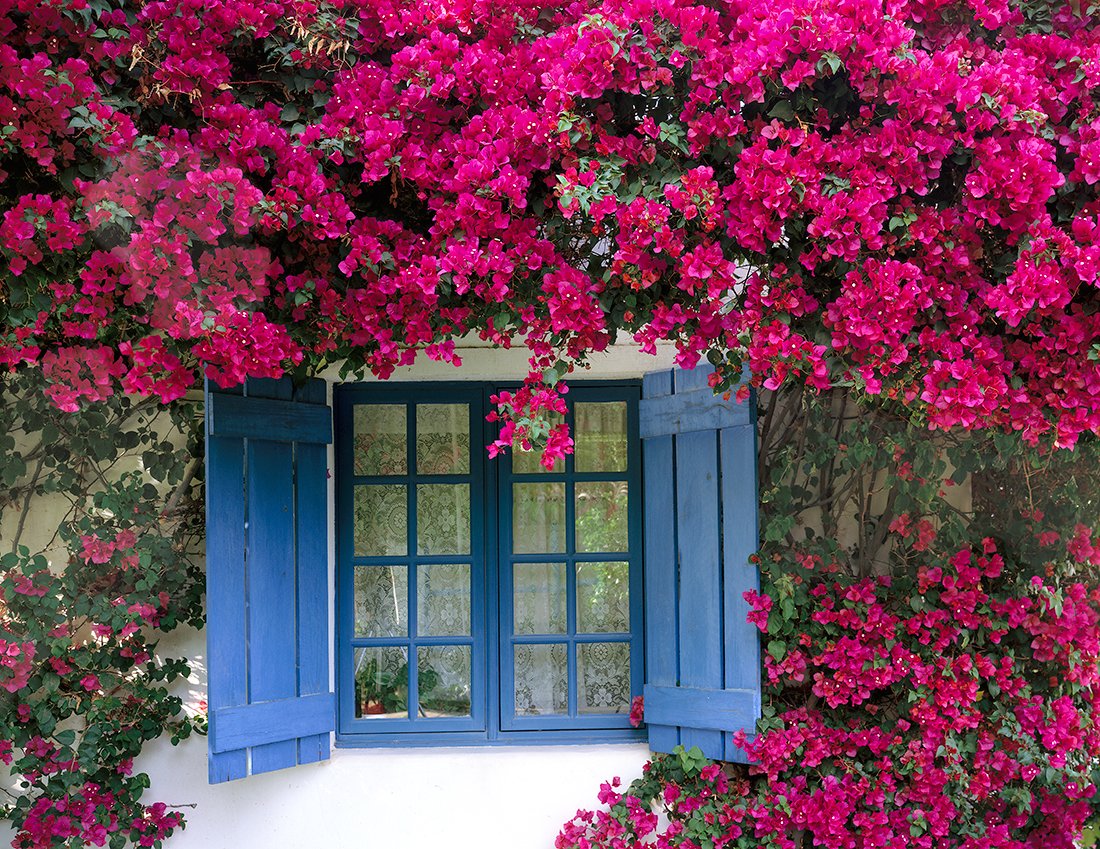
7. Passionflower
Passion Flowers are known for their unique, intricate flowers. They are generally low-maintenance, preferring full sun and well-drained soil. Pruning can help control their growth.
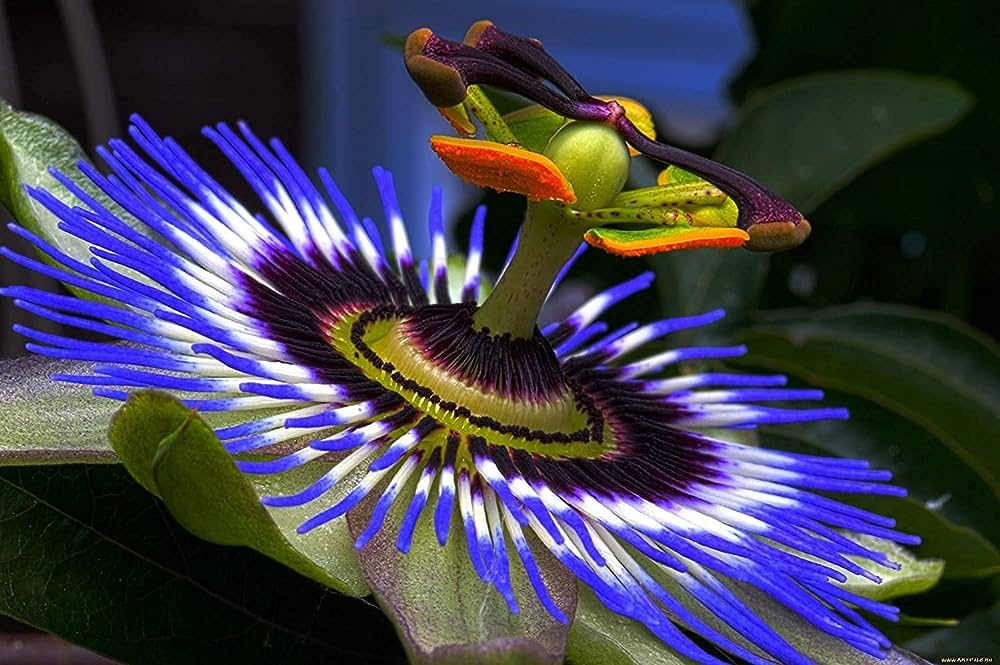
8. Firecracker Vine
A lot of people are unaware of this exotic-looking vine, but they should totally plant it! It can withstand drought and extreme heat, and hummingbirds love it. In most areas, it is regarded as an annual plant, but in warmer parts of the country, it might persist as a perennial. It prefers full sun and blooms all year long.
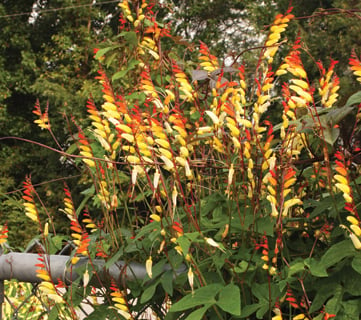
9. Climbing Roses
Some varieties of climbing roses are relatively low-maintenance. Many varieties of climbing roses are extremely fragrant, such as the dark pink Rosa ‘Gertrude Jekyll’ and the pale pink ‘The Generous Gardener.’ They need regular pruning and can benefit from some fertilizer, but they reward you with beautiful blooms.
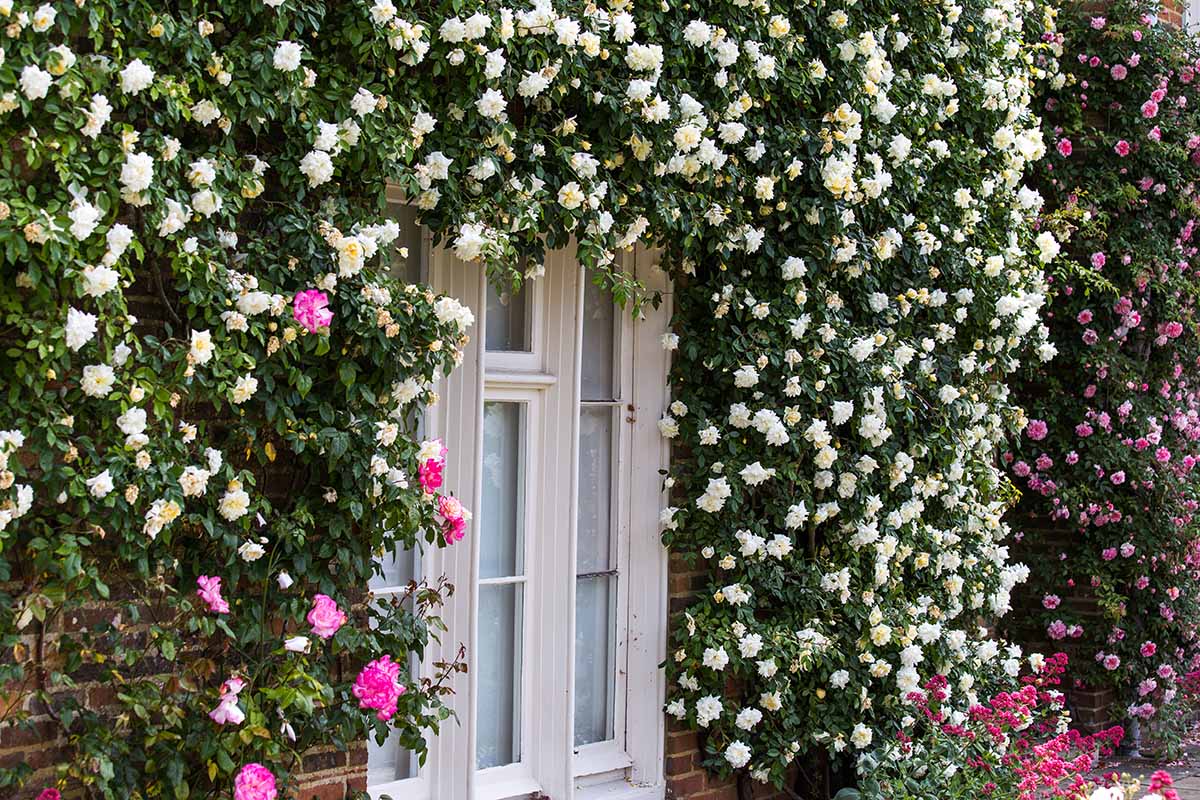
When planting any climbing plant, you should consider your specific climate, soil conditions, and available light. Even low-maintenance climbers may require some care during their initial establishment period, such as regular watering until they become established. However, once they’re settled in, these plants should thrive with minimal effort.
What to Keep in Mind when Choosing Low-Maintenance Climbing Plants
When choosing a low-maintenance climbing plant for your garden or outdoor space, you should consider several factors to ensure that you have a beautiful and hassle-free addition to your garden.
1. Hardiness Zone
Check your local hardiness zone, which indicates the climate conditions in your area. Select climbing plants that are well-suited to your zone to increase their chances of thriving with minimal maintenance.
2. Soil and Light Requirements
Consider the soil type and light conditions in the area where you plan to plant the climber. Choose a plant that matches these conditions, as it will be more likely to flourish without the need for extensive soil treatments or extra care.
3. Watering Needs
Low-maintenance climbers typically require less frequent watering once they’re established. However, some may have specific water requirements. Make sure that the plant you choose is suitable for your watering habits and local rainfall patterns.
4. Disease and Pest Control
Look for climbing plants that are known for their resistance to common diseases and pests. This can reduce the need for regular pesticide applications and plant treatments.
5. Pruning Requirements
While low-maintenance climbers generally require less pruning, some may benefit from occasional shaping or cutting back. Find out about the specific plant’s pruning needs and ensure they fit your maintenance preferences.
6. Growth Rate
Some climbers, like wisteria, can grow rapidly and might require more regular maintenance to keep them in check. Consider the growth rate of the plant and whether you have the time and want to manage it.
7. Longevity
Some climbing plants are perennial, while others are annual or biennial. Perennial climbers typically require less replanting and long-term maintenance, making them a more convenient choice for low maintenance.
Conclusion
Choose a climbing plant that suits your aesthetic preferences and matches your overall garden or landscape design. Just because you are looking for low maintenance should not mean that you should compromise on beauty and aesthetic appeal. Seek advice from local nurseries or gardeners about which climbing plants thrive in your region with minimal care.
They can provide valuable insights based on local conditions and experiences. By carefully considering all factors, you can select a low-maintenance climbing plant that aligns with your specific garden conditions and maintenance preferences. This will help create a beautiful garden with minimum effort.


